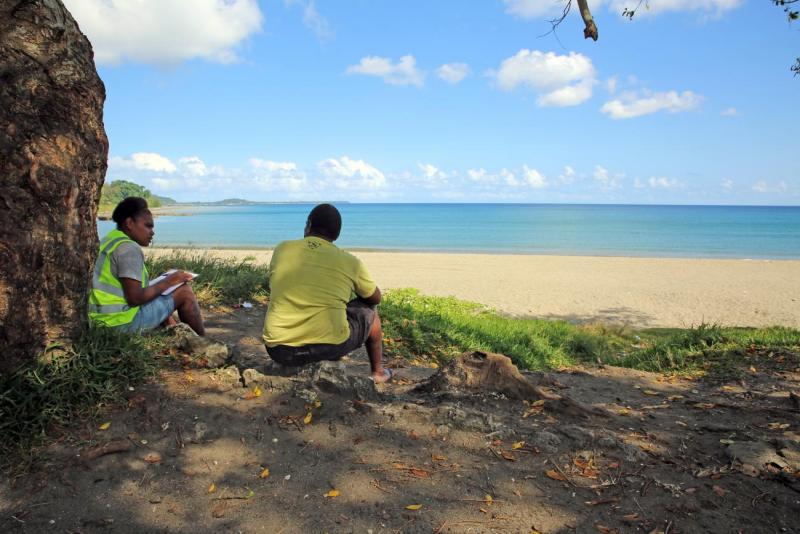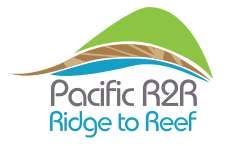
Pacific Community (Suva, Fiji) The Journal of Conservation Biology just published a new study about the interactions between land-use and marine ecosystems.
Funded by the Global Environment Facility through the United Nations Development Programme (UNDP) and the Pacific Community (SPC), the study undertaken by Seascape Solutions identifies priority areas on land where restoration and conservation actions would yield the highest benefits for coastal and marine habitat.
In Vanuatu, Pacific Ridge to Reef (R2R) Scientists and lead authors Dr Jade Delevaux and Dr Kostantinos Stamoulis applied the R2R approach which addresses linkages between land, forest, water, and coast, leading to holistic natural resources management and sustainable development. The study improves understanding the interconnectivity of freshwater and saltwater ecosystems, and provides scenarios that can support the management of both terrestrial and marine resources along the ridge to reef, or land to sea continuum.
SPC Regional Programme Coordinator Samasoni Sauni said: “SPC has partnered with the government of Vanuatu and local agencies since 2015 to test the Ridge to Reef concept and integrated management approaches. Together with Seascape Solutions, we are thrilled that this research has been peer-reviewed and published, where the approach and results can be used by decision makers to identify and prioritize management actions to reverse ecosystem degradation and strengthen community resilience and well-being.”
Globally, land-use change is considered one of the greatest human threats to marine ecosystems. Expansion of commercial agriculture, logging, and coastal development are harmful to seagrass and coral reefs habitats and associated fisheries through increases in land-based pollution.
The study demonstrates that Ridge to Reef management can guide the restoration and protection of forested habitat, reducing land-based human-related impacts with benefits to marine ecosystems.
Dr Delevaux said: “If applied correctly, R2R management actions can directly benefit environmental health, food security, and human wellbeing in tropical island communities around the world.”
An important challenge for the implementation of comprehensive land to sea restoration and conservation activities in tropical regions is that most of them are data-poor. Such activities would therefore strongly benefit from knowledge generated from R2R management.
To demonstrate such benefits, the researchers applied a spatially explicit linked land-sea model that integrates existing land-use with marine habitats using open access global datasets to simulate forest management scenarios and identify areas in key watersheds where restoration and conservation would provide the most benefit to marine habitats.
“There is a growing need to design ridge-to-reef management interventions that can provide multiple benefits, such as soil retention, biodiversity, clean water, healthy habitats, and fisheries, thereby supporting both nature and people. Decision support tools that can identify where to prioritize terrestrial management actions as a function of marine benefits can address this need in tropical data-poor regions interested in implementing ridge-to-reef management,” explained Dr Delevaux.
Dr Stamoulis said: “What is truly exciting is that the methods and the models used in this study also have applications far beyond Vanuatu. Such open-source global datasets are on the rise, as this information is needed to inform management in Pacific Island nations as well as in other regions.”
“By applying both the Coral Allen Atlas and Millennium marine habitat maps we were able to leverage the strengths of each and determine with more confidence where management actions should be implemented,” he added.
The application of this integrated land-sea planning approach provides a focus for future ridge-to-reef investments and integrated coastal management in other countries and territories across the Pacific.
This study was supported through funding from GEF-UNDP through the SPC, and IUCN to Seascape Solutions.
Original Publication: https://www.spc.int/updates/blog/2021/06/new-research-paper-reveals-lan…





